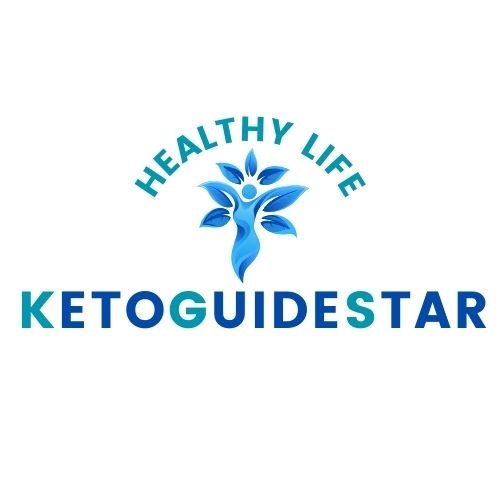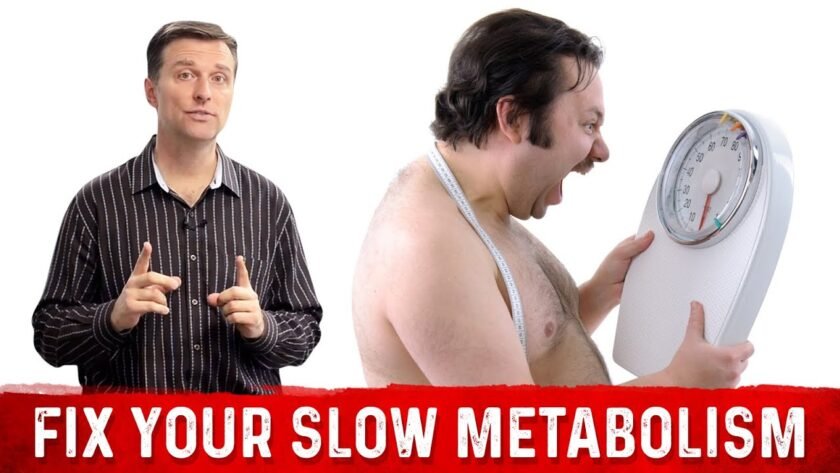Table of Contents
Let’s be honest, feeling like your metabolism is stuck in a rut is frustrating. I know, because I’ve been there. For years, I struggled with weight fluctuations, a lack of energy, and a constant feeling of being bloated. It felt like no matter how hard I tried, my metabolism just wouldn’t cooperate. But then I discovered a powerful secret… a simple shift that revolutionized my health and helped me finally reach my weight goals.
Ready to unlock your own metabolic potential? Keep reading!
Brief The Article:
What is metabolism and why is it important?
Metabolism is the body’s process of converting food into energy. It’s vital for health and weight management. A slow metabolism can make weight loss difficult and lead to various health issues.
How does dieting affect metabolism?
Dieting often slows metabolism, especially if done repeatedly over years. This makes weight loss progressively harder and can lead to weight regain after dieting.
What is the “set point” and how does it relate to metabolism?
The set point is the weight at which your body naturally tends to maintain. Lowering this set point is key to sustainable weight loss.
How does insulin affect metabolism and weight loss?
Insulin is a crucial hormone that regulates blood sugar, fat storage, and metabolism. High insulin levels can lead to insulin resistance, which slows metabolism and promotes fat storage.
What causes insulin resistance?
Insulin resistance is caused by consistently high insulin levels, often due to frequent eating (especially high-carb foods) and chronic stress.
How does the insulin index differ from the glycemic index?
The insulin index measures how much foods spike insulin, regardless of their effect on blood sugar. It’s more relevant for weight loss than the glycemic index.
How can intermittent fasting help fix a slow metabolism?
Intermittent fasting helps correct insulin resistance by allowing periods of low insulin, promoting fat burning and metabolic health.
What are some tips for improving insulin sensitivity and metabolism?
Key strategies include:
- Implementing intermittent fasting
- Reducing snacking, aiming for 2-3 meals per day
- Consuming apple cider vinegar and fermented foods
- Eating high-potassium vegetables
- Increasing fiber intake
- Consuming healthy fats
- Reducing stress and cortisol levels
- Balancing estrogen levels
Fix Slow Metabolism
Start by implementing intermittent fasting or reducing to 3 meals a day without snacks. Gradually increase fasting periods as comfortable. Focus on whole foods, healthy fats, and vegetables while reducing processed and high-insulin foods.
Key Points:
- Metabolism is crucial for health and weight management
- Dieting often slows metabolism, making weight loss harder over time
- Insulin resistance is a major factor in slowed metabolism
- Intermittent fasting can help fix insulin resistance and reset metabolism
- The insulin index is more important than the glycemic index for weight loss
- Reducing snacking and focusing on 2-3 meals a day can improve metabolism
So let’s dive into the details…
Metabolism is vital to your health
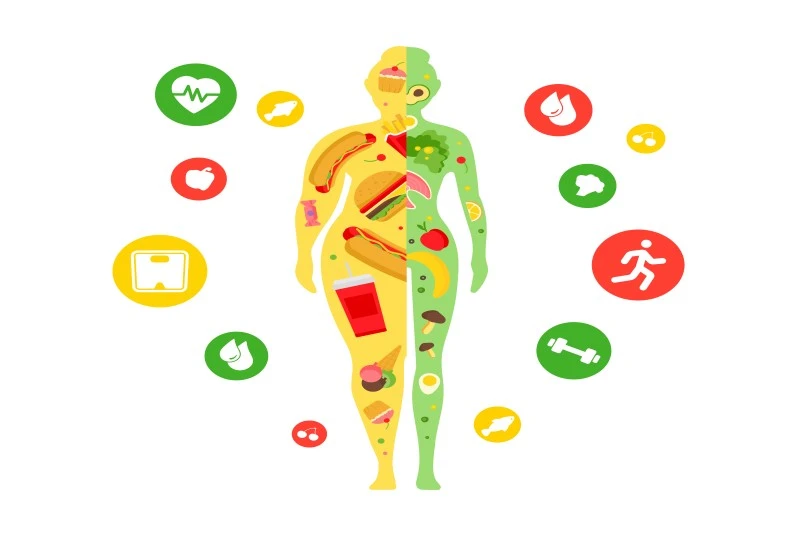
Hey guys, it’s me! In this topic, we’re going to talk about how to fix a broken metabolism. This is the most important thing you need to know,
so if you’re doing anything right now that’s distracting you, put it away, get a piece of paper, and take notes.
the first thing I need to do is give you a little foundation so you understand what I’m gonna talk about next. Okay, so I’m gonna kind of build on this, so as we go just take notes.
key points
- Broken Metabolism: The main topic of discussion.
- Importance of the Topic: Highlighted as the most important thing to know.
- Call to Action: Encourages taking notes and paying attention.
The foundational facts of metabolism
Number one, there are some facts about the metabolism. When you go on a diet, you will slow your metabolism, so dieting slows your metabolism. If you’ve dieted for many, many years, then your metabolism is very, very slow.
If you’ve never dieted, then your metabolism is probably a lot faster. Okay, so dieting also increases hunger and cravings.
key points
- Dieting Slows Metabolism: Repeatedly emphasized.
- Long-Term Dieting’s Impact: Highlights the significant slowing effect.
- Dieting and Hunger: Links dieting to increased hunger and cravings.
The foundational facts of metabolism – The Biggest Loser Example
If you ever look at the show The Biggest Loser, they always make it look so, you know, like dramatic, like how can they lose all that weight?
But what happens when these guys start losing, they start slowing down and slowing down where it’s really, really tough until they have to exercise so hard to get off that last bit of weight, it’s crazy.
And then they don’t show they have to sign a waiver. Many of these people gain the weight right back, okay, and I’ll tell you why in a second.
key points
- The Biggest Loser and Slowed Metabolism: Uses the show as an example of extreme dieting and its consequences.
- Difficulty of Final Weight Loss: Points out the struggle to lose the last bit of weight due to slowed metabolism.
- Weight Regain: Highlights the common issue of weight regain after extreme dieting.
The foundational facts of metabolism – Age and Exercise

So also age slows your metabolism. (Surprised?) You’re probably already finding it out. So exercise will increase hunger and cravings too, with some people but mainly hunger because you’re burning stuff up. You’re going to want more.
key points
- Age and Metabolism: States that metabolism naturally slows with age.
- Exercise and Hunger: Explains the link between exercise and increased hunger.
The foundational facts of metabolism – Weight Loss and Survival
And the last thing is it’s very unnatural to lose weight, very unnatural. Losing weight is anti-survival because fat is a survival mechanism.
So when you try to lose it, it goes against survival. So really we need to dive in like the understanding of what that is so we can undo it, but we’re talking really about your set point.
key points
- Unnatural Weight Loss: Presents the idea that weight loss goes against the body’s natural survival instincts.
- Fat as Survival Mechanism: Explains the role of fat in survival.
- Understanding Set Point: Introduces the concept of set point as crucial for understanding weight management.
The weight “set point”
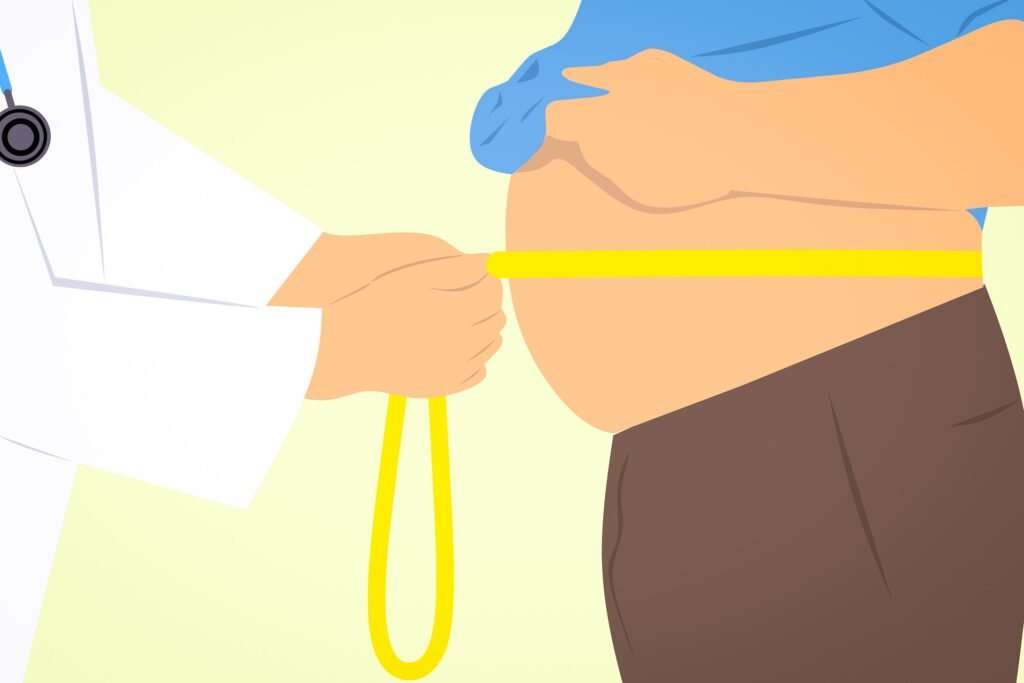
And the set point is the point at which your body very likes to be weight-wise. It just settles into a certain point.
It doesn’t like to go below that, it might not even go higher than that, but it likes to settle down at a certain point. So my goal is to help in this topic show you how to lower that set point.
So for example, let’s say your set point is 182 and you want to get to 142, so we need to drop the set point and that’s really the metabolism point where your body kind of settles into it, likes to…
the body just likes to be the same. It doesn’t like to go down too much because that’s starvation, right?
key points
- Set Point Definition: Defines set point as the body’s preferred weight range.
- Goal: Lowering Set Point: States the aim to help viewers lower their set point for weight loss.
- Set Point and Starvation: Explains why the body resists going below its set point.
The weight “set point” – Destroying the set point
So what we want to do is give you the next part of this, a foundation of how we’re going to fix the set point,
but first, we have to talk about what destroys the set point beyond just dieting. Okay, so let me show you that. Okay, so here’s what you need to know.
key points
- Fixing the Set Point: Introduces the next section on how to address the set point.
- Factors Beyond Dieting: Highlights that factors other than dieting can negatively impact the set point.
How Insulin Slows Your Metabolism – The Pancreas and Insulin
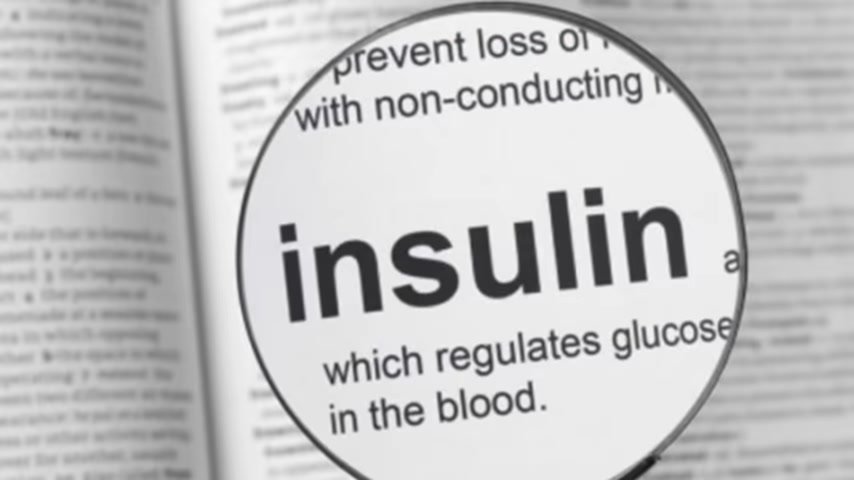
Number one, you have this thing called the pancreas. It’s located underneath your left ribcage, and the pancreas has about a million islands of cells. Okay, and there’s this little little tiny…
it looks like little ions, islands in a bunch of tissue and they call it islands of Langerhans after the guy’s name who discovered it,
but there’s different cells and they’re called alpha, beta, Delta cells. The beta cells are the ones that we’re going to talk about first and 60% of those cells are made of cells.
Okay, and the other 40% are other cells. Now, what is beta cells? The beta cells make insulin. Okay, so that’s what they do. So insulin is most known for regulating sugar, right, in carbohydrates.
So what insulin does is it lowers the sugar in the blood. Okay, so that’s what I’m going to kind of build on this but you need to understand that. So insulin lowers the sugar
but the other thing is that insulin also has other functions that a lot of people don’t realize.
key points
- Pancreas and Insulin Production: Explains the role of the pancreas and beta cells in insulin production.
- Insulin’s Primary Function: Describes insulin’s main role in regulating blood sugar.
How Insulin Slows Your Metabolism – Insulin’s Other Functions
Number one, it affects fat metabolism, it affects protein metabolism. Okay, so it makes it converts sugar into cholesterol, it converts sugar into triglycerides (those are blood fats),
it basically increases the tension on the arteries increasing blood pressure, it retains sodium. Okay, it drives protein or amino acids into the cells
so we’ll get more into that in a bit but I wanted just to have you understand that protein insulin is a lot more to do just just in carbohydrate metabolism,
but for your viewpoint what you need to know right now is that it’s the thing that makes you… makes fat. It’s the primary regulator that makes you fat
and it actually blocks any chance of burning fat in the presence of a little bit of insulin. You’re not going to burn fat, period.
Okay, and this is out of Guyton’s Physiology and this is a known fact. So it’ll make you fat and blocks the release of that.
key points
- Insulin’s Impact on Fat and Protein Metabolism: Highlights insulin’s broader effects beyond just sugar regulation.
- Insulin and Fat Storage: Emphasizes insulin’s role in fat storage and its hindrance to fat burning.
How Insulin Slows Your Metabolism – Insulin, Glycogen, and Fat Storage
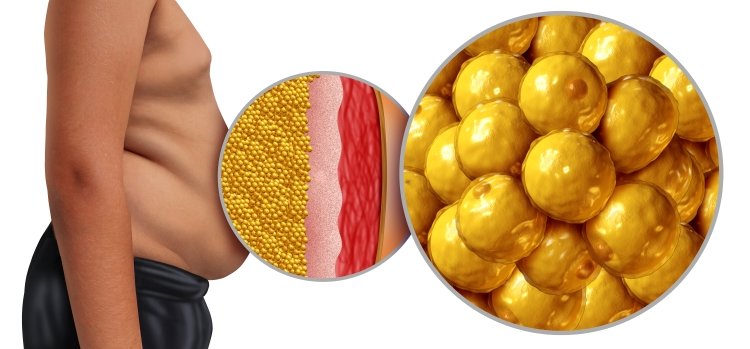
So we have insulin that is triggered by a high carbohydrate meal. You probably know that. You eat some bread, you increase sugar and what happens, your body will store that into a stored sugar called glycogen.
So glycogen is a series of glucose molecules stuck together. Okay, it needs potassium to be stored. So we got stored sugar and then anything excess it turns into fat.
so we have a combination of stored sugar and fat. Okay, that’s what insulin does.
key points
- Carbohydrates and Insulin Release: Explains how consuming carbohydrates triggers insulin release.
- Glycogen and Fat Storage: Describes the process of converting excess sugar into glycogen and then fat.
How Insulin Slows Your Metabolism – Fatty Liver and Insulin

And so what happens though with a lot of people is they start getting a fatty liver. So it’s really the insulin that makes the fatty liver, especially if the person is not consuming alcohol.
- Insulin and Fatty Liver: Links high insulin levels to the development of fatty liver.
How Insulin Slows Your Metabolism – Insulin and Protein Destruction
All right, and then insulin, if gone on too far, will destroy proteins. Yeah, muscle wasting, all the programming… think about what part of your body’s protein.
You got intracellular proteins, you have like so many different proteins. Your body is going to waste those and it’s going to convert those into sugar and it’s going to leave carbon skeletons.
So it’s just basically going to leave the waste and it’s going to convert everything else to sugar and basically that’s what destroys the diabetic is that they get clogged arteries, a stroke, they have their kidneys fail,
and then they had a protein destruction. That’s why they usually have protein coming out of the kidneys and they destroy that and say you have everything that kind of spills off into the rest of the tissue.
So it’s a very ugly destructive disorder.
key points
- Insulin’s Destructive Effects: Warns about the potential for insulin to cause muscle wasting and contribute to diabetic complications.
How Insulin Slows Your Metabolism – Normal Blood Sugar Levels
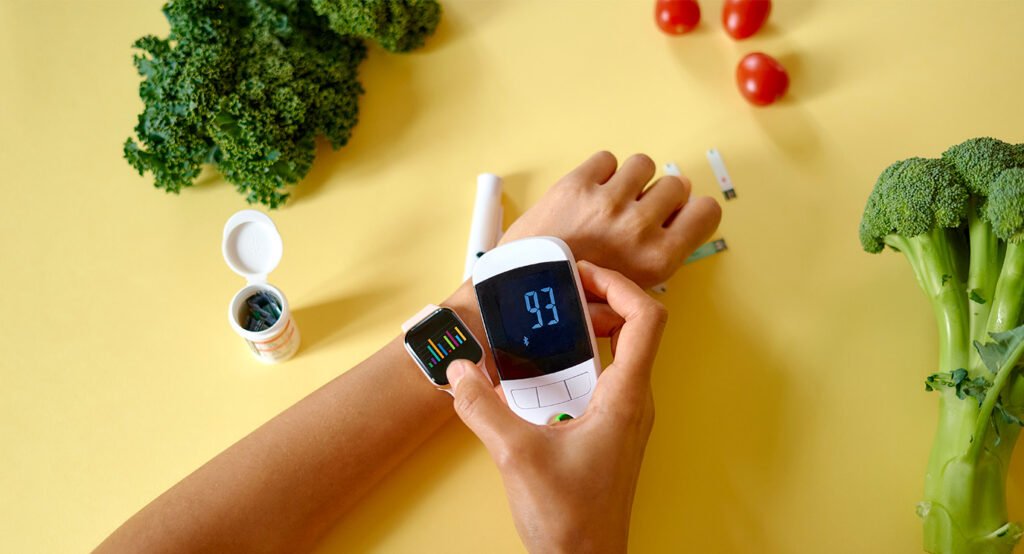
And then what happens normally there’s supposed to happen is before a meal you should have a blood sugar between let’s say 75 and 90, like it’s say 80 and 90.
Okay, but normal also it can go up to 100. So let’s say between 80 and a hundred, that’s normal before you eat.
Okay, what happens though when you eat the blood sugar should normally spike up to like 120, it can even go up up to like 140 after a meal.
Okay, but the closer you get to 140, the more you’re becoming a problem. So if it’s above 140 then you become more diabetic because of diabetes you have this spike in sugar because the insulin is not there to keep it in check so it’s out of control.
So what happens normally is you eat it comes spikes to 120 and then it comes back down to normal after 2 to 3 hours.
That’s normal because the insulin controls that blood sugar. But in a diabetic situation, it raises too high out of control, you get tired, brain fog, and then it takes a long time to come back and reset.
so now let’s go on to the next part.
key points
- Normal Blood Sugar Fluctuations: Explains the expected rise and fall of blood sugar levels before and after meals.
- Diabetic Blood Sugar Response: Contrasts this with the uncontrolled blood sugar spikes seen in diabetes.
What Causes Insulin Resistance?
High insulin over time, or plus time, equals insulin resistance. Now, a good analogy would be let’s say you live in or near the train track and there’s a train that goes over your house and you live like there’s
like a metro or something and at first you can’t sleep because it’s so noisy but over time you… you become desensitized, you don’t hear it anymore because you get used to it.
So same thing being exposed to an antibiotic, you become antibiotic resistant. Okay, so when you have too much of a hormone, especially insulin, the receptor that’s supposed to receive that hormone gets altered.
It compensates, it downgrades so it doesn’t absorb it. So basically your body is trying to reject insulin because it’s too high. Okay, so what causes this insulin resistance?
This is too much insulin. Okay, so you have a situation where you have too much insulin but you also have not enough insulin in certain places of your body like in the self and in the blood,
but we have too much insulin other places. So you can have symptoms of both hyper and hypoglycemia. Interesting!
key points
- Insulin Resistance Analogy: Uses the train track analogy to explain how the body becomes desensitized to high insulin levels.
- Causes of Insulin Resistance: Points to chronically high insulin levels as the primary cause.
- Paradox of Insulin Resistance: Explains the seemingly contradictory situation of having both too much and not enough insulin in different parts of the body.
What Causes Insulin Resistance? – Symptoms
So let’s go through the symptoms. Fatty liver. Okay, if you have a fatty liver you have insulin resistance. If you have insulin resistance you have a fatty liver
because one thing will also cause another because some of the fat in the liver actually releases certain inflammatory responses that make you insulin resistant.
So it’s really a nasty double-edged sword. Brain fog. Okay, high fasting insulin. So even when you’re not eating sugar the insulin is still high in certain places of your body.
Remember insulin blocks fat burning. Okay, belly fat, bloating, digestive issues, sleep… sleepy after a meal, like so you eat lunch and you have to take a nap. That’s classic insulin resistance.
High blood… blood pressure. Why? Because insulin causes tension within the arteries. Cravings and hunger. Well, wait a second, that’s a low insulin situation but it’s an insulin resistance symptom,
but it’s really certain parts of your body have a low insulin because the cell won’t let it kind of connect. So you’re basically craving and hungry all the time.
Dark pigment in your folds up in different folds of your body, like you’re growing your armpits, your neck, you have a little a darker pigmentation.
That can happen in advanced stages. And hunger between meals. So you can’t go a long period of time without getting hungry or having a blood sugar issue.
That’s insulin resistance. So insulin resistance is the single biggest problem for that controls your set point. It destroys your set point. Okay, why?
Because insulin is the hormone that tells your body whether to burn fat or not. Okay, it’s going to… it’s going to become more clear as we go through the next part, too.
So insulin increases fat, prevents the burning of fat, and controls and destroys your set point. Other… net is perfectly fine. Let me show you the next part.
Okay, so now the big question is what causes insulin resistance. Okay, high insulin, but what causes insulin to spike, right? You already know it’s sugar, but there’s some other things that will increase insulin as well.
key points
- Symptoms of Insulin Resistance: Provides a comprehensive list of common symptoms associated with insulin resistance.
- Insulin Resistance and Set Point: Reiterates the connection between insulin resistance and a disrupted set point.
Symptoms of Insulin Resistance
- Fatty liver
- Brain fog
- High fasting insulin
- Belly fat
- Bloating
- Digestive issues
- Sleepiness after meals
- High blood pressure
- Cravings and hunger
- Dark pigment in body folds
- Frequent hunger between meals
The Glycemic Index and Slow Metabolism – Causes of Insulin Spikes
And that would be protein, some types of protein more than others. Okay, and what I’m talking about is I’m talking about the protein doesn’t trigger glucose.
So you’ve probably heard of the glycemic index, right? Well, that’s the level of the foods that trigger the sugars but have you ever heard of the insulin index? Completely different.
Okay, I’m going to talk about the next section but the point is there are other factors that will increase insulin that don’t increase glucose. It’s… this explains why you probably are eating healthy,
no sugars, and you’re still not at losing weight. Now, before you get freaked out and say hey I have to not have to give up protein, hear me out.
Okay, because there’s some other solutions, but the point is that especially for eating a large amount of proteins but protein does trigger insulin to some degree if we look at the different types of proteins.
Well, let me just say that… to the next one but gastrointestinal hormones. What does that mean? It means that there are hormones in your… your GI tract that also increase insulin.
So really every time you eat you increase insulin. Okay, so there’s a couple of foods that don’t increase insulin.
I’ll get into that next section but the point I’m trying to make is that there’s other things that are messing you up other than just the sugar. Estrogen increases insulin as well.
that explains why women when they get pregnant, they go through the menstrual cycle, they get fatter. Okay, especially if the estrogen is too high.
So we’re going to talk about the insulin index in the next section.
key points
- Protein and Insulin: Explains that protein, while not directly raising blood sugar, can still trigger insulin release.
- Glycemic Index vs. Insulin Index: Differentiates between the glycemic index (blood sugar impact) and the insulin index (insulin release impact).
- Gastrointestinal Hormones and Insulin: Introduces the concept of gut hormones also contributing to insulin release.
- Estrogen and Insulin: Highlights the link between estrogen and increased insulin levels.
The Glycemic Index and Slow Metabolism – The Insulin Index

All right, now check this out. This is the insulin index. Okay, very different than the glycemic index for the most part but look at butter, it’s 2%.
It’s very, very low, does barely triggers insulin at all, just slightly. Okay, olive oil 3%, coconut oil 3%. So really all the fats are… there’s no stimulation
and this is why you can get away with eating the fat more than going low-fat because watch what happens as we go up the scale. We have low-fat yogurt, 76%.
So when you go low-fat cheese, we get rid of the buffer for the insulin and the protein is higher and you get more insulin.
So all these low-fat things at the store are creating insulin problems because they’re not using the fat as a buffer for insulin and that’s why even ice cream recipe that I have is that the heavy cream…
look at heavy cream is 4%. Okay, that’s low, it doesn’t stimulate insulin so it’s not gonna… it’s not going to destroy the set point, it’s not going to create a problem.
Now, you can eat too much of it, but the point is that it’s not going to be the importance of getting rid of it is very, very minimal. Okay,
it’s much more important to avoid the higher insulin things but check this out. Egg yolk 15%, that’s pretty low, but look at the egg…
egg whites is 55%. How many people do you know that just do egg whites thinking they’re doing themselves some good and they’re not doing the egg yolk?
The egg yolk is much better for weight loss if we combine the egg yolk with the egg whites we get the whole egg, it brings it down to 21%. So by adding fat with a meal you’re actually helping the situation.
key points
- Insulin Index Examples: Provides specific examples of foods and their corresponding insulin index values.
- Fat as an Insulin Buffer: Explains how fat can help mitigate the insulin response to protein.
- Low-Fat Foods and Insulin: Cautions against low-fat options, as they can lead to higher insulin spikes.
The Glycemic Index and Slow Metabolism – The Insulin Index (Continued)
Now it is true when you go through ketosis you can… you could be burning your own… your dietary fat and not your own fat, but don’t be afraid to consume whole things, don’t go lean at all.
Okay, don’t be afraid to use some butter, don’t be afraid to use some of these products. So look at this we got… peak… it’s very, very low, bacon 9%. See, in your mind you’re probably like,
“Why need some lean bacon?” No, you don’t. You want the fattier bacon because the leaner the protein the more it spikes insulin. Peanut butter 11%, cheese 15%, turkey 23%, berries 47%, look at beef 51%.
So these people that do the Atkins diet, let’s say they do it the first time it works, the second time it doesn’t really work as well, the third time it doesn’t work at all. Why?
Because dieting slows your metabolism, it destroys the set point, and they’re actually increasing their insulin, not as bad as a sugar person,
but that’s really what happens. Look at Apple 75%, low-fat yogurt 76%, a banana 84%, whole wheat bread 96%, baked beans a hundred percent, potatoes 121%.
I will also share in the extra section some food plans to show you what food you should be eating just to take it one… one step further.
Okay, now so I’m just bringing your awareness up that there are foods that are messing you up. They’re not necessarily sugars.
Okay, and I want to show you next this one little point here which is very, very, very important and… and I know I kind of spent a lot of time getting to this point but this is the most important point of this whole presentation.
Okay, so if high levels of insulin over a period of time causes insulin resistance, then what happens is we have breakfast, lunch, and dinner, right?
Insulin Index Examples:
| Food | Insulin Index (%) |
| Butter | 2 |
| Olive Oil | 3 |
| Coconut Oil | 3 |
| Low-Fat Yogurt | 76 |
| Low-Fat Cheese | (not specified) |
| Heavy Cream | 4 |
| Egg Yolk | 15 |
| Egg Whites | 55 |
| Whole Egg | 21 |
| Pecans | Very Low |
| Bacon | 9 |
| Peanut Butter | 11 |
| Cheese | 15 |
| Turkey | 23 |
| Berries | 47 |
| Beef | 51 |
| Apple | 75 |
| Low-Fat Yogurt | 76 |
| Banana | 84 |
| Whole Wheat Bread | 96 |
| Baked Beans | 100 |
| Potatoes | 121 |
Fat as an Insulin Buffer:
- Fat can help mitigate the insulin response to protein.
- Consuming fat with a meal, especially when eating protein, can help lower insulin spikes.
Low-Fat Foods and Insulin:
- Low-fat foods often lead to higher insulin spikes.
- Low-fat products may remove the natural fat buffer, causing more insulin to be released in response to protein.
key points
- Ketosis and Dietary Fat: Briefly touches on ketosis and the burning of dietary fat.
- Insulin Index of Various Foods: Continues listing the insulin index of various foods, emphasizing the impact of protein and fat content.
- Atkins Diet and Insulin: Explains why the Atkins diet may lose effectiveness over time due to its potential to increase insulin levels.
How Intermittent Fasting Helps Fix Slow Metabolism – The Importance of Meal Timing

So here’s the problem. When we eat, even the hormones in our digestive tract spike insulin. Boom. Okay, so we know we’re gonna get rid of this sugar and all that and that’s great,
but if you snack in between the meals, if you’re eating even with healthy things okay you’re spiking the insulin so we never have a chance to correct insulin resistance.
So you must shoot for three meals a day or two. Not to lower calories because we’re going to increase some fat, but simply to correct the insulin resistance.
Now, how do you know if you have insulin resistance? Well, all those symptoms, if you have belly fat, if you have… you’re going to have a fatty liver,
if you have a fatty liver you’re going to have insulin resistance, if you have insulin resistance you’re going to have a fatty liver.
A fatty liver you’re going to have visceral fat around here. So it’s all kind of connected. So the point is that you want to shoot for only doing three meals a day. Okay, that’s number one.
key points
- Meal Frequency and Insulin: Emphasizes the importance of limiting meal frequency to allow insulin levels to drop and address insulin resistance.
- Insulin Resistance and Visceral Fat: Connects insulin resistance to the accumulation of visceral fat.
How Intermittent Fasting Helps Fix Slow Metabolism – Listening to Your Body’s Hunger Cues

But here’s the thing, some people when they get up in the morning are not hungry so don’t eat. Even though breakfast is the most important, your breakfast might be delayed until lunch
if you’re not hungry in that morning. Don’t consume any food, only eat when you’re hungry. This… this is a lie to state that you need six meals a day.
It’s just going to screw things up. So we don’t eat until we’re hungry and then we eat. Okay, now if you want a little snack,
let’s say sugar-free chocolate or whatever, you can eat that right at the end of the meal, but not in the middle of the meals, not between meals.
If you are so hungry and ravenously craving between meals, then we have to increase a little bit more food during the meal itself, specifically fat, low glycemic fat.
Okay, and what that means is you have insulin resistance, that’s why you have almost like a blood sugar issue there.
key points
- Intuitive Eating: Encourages listening to your body’s hunger cues and not forcing yourself to eat if you’re not hungry.
- Snacking and Insulin: Discourages snacking between meals to avoid constantly spiking insulin levels.
How Intermittent Fasting Helps Fix Slow Metabolism – Avoiding Late-Night Eating

And then the same thing at night, don’t consume past your dinner. Okay, now some of my clients are doing… they’re basically…
they’re not hungry in the morning, they eat a big lunch, and they need a dinner, and they’re done, two meals, and that’s incredible because you’re doing intermittent fasting for the next period of time.
So you’re gonna heal the insulin resistance, you’re going to lower your set point. Me, I have to eat you to breakfast and then a lunch and I barely will have a dinner. I might have a small little kale shake and I’m done.
So it’s like two and a half meals a day. So you can do that as well, but the key is don’t snack at night. Okay, you can drink tea and things like that.
All right, so… and then the last section I’m going to give you a series of additional things that you can do to improve insulin resistance.
so intermittent fasting is a very important thing to implement but you don’t necessarily have to go the whole day without eating. You can start with three meals and then go down to two.
If you want to alternate and do every other day, you know, skip a meal that’s totally fine
- Intermittent Fasting Benefits: Highlights the benefits of intermittent fasting for improving insulin sensitivity and lowering the set point.
Nine tips for improving your insulin sensitivity and metabolism
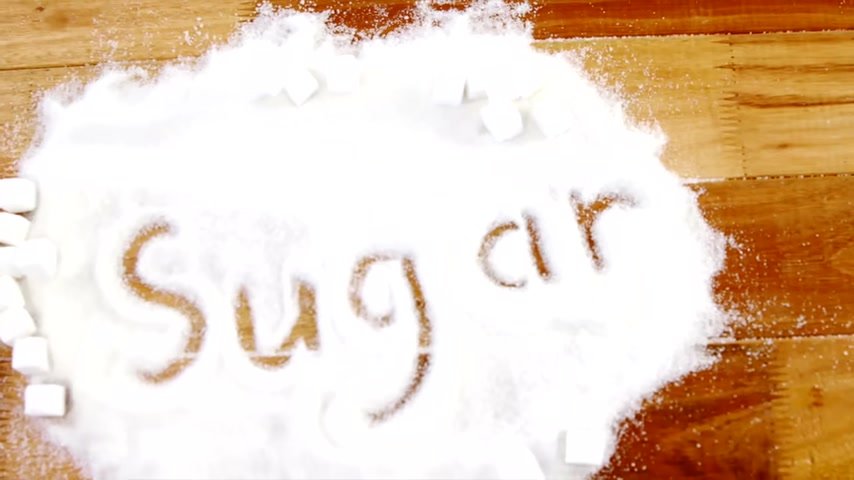
as you do this you’re going to control your sugar, it’s better between meals, and you won’t have to eat as much because you’re thinking about it.
When you’re fasting, you’re living off your own fat. If you have a reserve to burn, then might as well burn that up when you hit your goal. You don’t necessarily have to do fasting anymore.
It’s not starving your body, it’s basically getting your body just more efficiently just switch over to fat-burning and not burn your sugar because if you actually can’t make it to the next meal that means that you’re just burning sugar.
So we have to improve this. So there’s several things we can do to lower insulin. Okay, number one, apple cider vinegar helps blood sugar tremendously.
So you can consume that with a meal. If you don’t like it, you can consume it as a pill, put in… but if you’re gonna do it in water, a teaspoon per glass.
, fermented foods are much better for insulin than anything else. So fermented cabbage, sauerkraut, that’s all really good because it has a vinegar in it as well.
High potassium food, that would be all the vegetables. Now here’s the problem when we do this, when we lower insulin,
you’re going to be living off your fat and you’re gonna have a lot more fat being burned which means that your liver has to process a lot more fat burning.
If you do this without eating enough vegetables, you’re gonna end up with a fatty or liver. So there is no choice, you have to consume larger amounts of greens.
You can blend them, you can drink them, but you need to consume that to keep the fat flush from the liver. That’s the only way you’re going to get rid of the fatty liver.

, so then we got high potassium foods that’s vegetables, high vitamin b1 is also will decrease the need for insulin, that would be a nutritional yeast.
, make sure you don’t buy the synthetic version though. Fiber… it’s also in my adrenal de-formula to have b1 that’s a natural one. Fiber…
like if you’re going to do a choice between a kale shake with the fiber, like a blended versus a juice, it’s better to do the fiber because the fiber buffers the insulin.
, so we want fiber-rich foods. Celery is great. Fat… consume more pure fats. Why? It’s not that we’re telling you that fat’s going to necessarily cause you to lose a lot of weight, but it’s very sustaining between the meals and it has no effect on insulin. It’s gonna help correct it.
key points
- Apple Cider Vinegar: Suggests using apple cider vinegar to help regulate blood sugar.
- Fermented Foods: Recommends incorporating fermented foods for their beneficial effects on insulin.
- High Potassium Foods (Vegetables): Emphasizes the importance of consuming plenty of vegetables for potassium and liver support.
- High Vitamin B1 Foods: Suggests consuming foods high in vitamin B1, such as nutritional yeast.
- Fiber-Rich Foods: Recommends choosing fiber-rich options to help buffer the insulin response.
- Healthy Fats: Encourages the consumption of healthy fats for satiety and their minimal impact on insulin.
Nine tips for improving your insulin sensitivity and metabolism (Continued)
So what we’re trying to do is we’re trying to get you to eat enough fat so you can go longer without having to eat.
The reason why we’re going longer is so we can reverse the flow and not have sustained persistent insulin but have like a low insulin situation because if you have diabetes
and you constantly have high sugar, well, if you don’t eat you’re not going to have high sugar so guess what?

This is really good for a diabetic and this is how you reverse diabetes because what is insulin resistance? It’s type 2 diabetes,
but you can have a version of it doesn’t come like this. You can have a small version of it that’s not… it’s like a pre-diabetes situation.
, so lowering cortisol that’s with the stress, reducing the stress, doing my adrenal techniques, all that, removing body stress is important because cortisol releases glucose which increases insulin and reducing estrogen if you have too much of it.
So if your period is heavy, we can do the technique on the ovaries. If you’re taking estrogen, not a great idea because it’s going to cause you to gain weight.
Sleeping more is going to lower insulin. Exercising is going to lower insulin. We talked about vegetables. Okay, so I gave you a lot of things that you can do.
Go ahead and start with the intermittent fasting or leave 3 meals and no snacks and then try to go to overtime.
Okay, and watch what happens. Your set point is going to go down. This is how you fix a broken metabolism.
key points
- Lowering Cortisol (Stress Reduction): Advises on managing stress to reduce cortisol levels, which can indirectly impact insulin.
- Reducing Estrogen (If Excessive): Suggests addressing high estrogen levels if they are a contributing factor.
- Adequate Sleep: Recommends getting enough sleep to support healthy insulin sensitivity.
- Regular Exercise: Encourages regular exercise for its positive effects on insulin regulation.
Tips for Improving Insulin Sensitivity and Metabolism
- Implement intermittent fasting
- Consume apple cider vinegar
- Eat fermented foods
- Increase high-potassium foods (vegetables)
- Consume high vitamin B1 foods (nutritional yeast)
- Increase fiber intake
- Consume more pure fats
- Lower cortisol (reduce stress)
- Reduce excess estrogen
Additional-resources
Summary
- Dieting slows your metabolism. If you have dieted for many years, chances are, your metabolism is very slow.
- Dieting increases your hunger and cravings. In turn, many people who go on diets end up gaining the weight right back.
- Age slows down your metabolism.
- Exercise increases your hunger and cravings.
- It’s unnatural to lose weight. If you think about it, your body’s goal is to store energy for when it really needs it—like a time of famine or starvation. Weight gain is a survival mechanism.
- There’s a certain point that your body likes to settle at as far as your weight. I like to call this the “set point.” Your set point is the range where it becomes difficult to either lose weight or even gain weight. I want to show you how to lower your set point. Let’s say your set point is around 182, and you want to lower it to 142. The goal is to drop the set point.
- First, there is one primary thing that ruins your metabolism’s set point: high insulin. In the presence of insulin, it is impossible to lose weight and drop your set point. Insulin promotes fat storage and prevents fat loss. Sugar and carbohydrates trigger insulin. Over years of a high-carb and high-sugar diet, your cells become resistant to insulin, which leads to more insulin production to try to compensate.
To get insulin resistance under control, you have to limit:
- Sugar/carbs
- Protein
- Gastrointestinal hormones
- Estrogen
To fix your metabolism, consume foods low on the glycemic index. High-fat foods are fantastic for fighting insulin resistance and metabolism problems. Avoid low-fat foods.
Intermittent fasting helps avoid insulin spikes, which reduces insulin resistance and improves metabolism. Only have 1-3 meals a day and skip breakfast whenever possible.
More tips for fixing your metabolism:
- Apple cider vinegar
- Fermented foods
- High potassium foods
- Vitamin B1
- Fiber
- Fat
- Lower cortisol and estrogen
- Sleep and exercise
- Consume plenty of low-carb vegetables
FAQ
Can you speed up a slow metabolism?
Yes, you can speed up a slow metabolism through various lifestyle changes and dietary adjustments:
- Increase protein intake to boost thermic effect of food
- Incorporate strength training to build muscle mass
- Practice high-intensity interval training (HIIT)
- Stay hydrated with cold water to increase calorie burning
- Get adequate sleep to regulate hormones affecting metabolism
- Manage stress levels through relaxation techniques
- Incorporate metabolism-boosting foods like green tea and spicy peppers
How do I go from a slow metabolism to a fast metabolism?
Transitioning from a slow to a fast metabolism requires consistent effort and lifestyle changes:
- Increase daily physical activity, including both cardio and strength training
- Eat regular, balanced meals to stabilize blood sugar and prevent metabolic slowdown
- Increase protein intake to support muscle growth and boost metabolism
- Practice intermittent fasting to improve insulin sensitivity
- Get enough sleep (7-9 hours) to support hormonal balance
- Reduce stress through meditation, yoga, or other relaxation techniques
- Stay hydrated and incorporate metabolism-boosting beverages like green tea
Why my metabolism is so slow?
Several factors can contribute to a slow metabolism:
- Genetics: Some people naturally have a slower metabolic rate
- Age: Metabolism tends to slow down as we get older
- Muscle mass: Less muscle means slower metabolism
- Hormonal imbalances: Thyroid issues can affect metabolic rate
- Diet history: Crash diets or prolonged calorie restriction can slow metabolism
- Sedentary lifestyle: Lack of physical activity reduces metabolic rate
- Poor sleep habits: Insufficient sleep can disrupt metabolic processes
- Certain medications: Some drugs can affect metabolism
Foods that increase metabolism and burn fat
Incorporate these metabolism-boosting foods into your diet:
- Protein-rich foods: Lean meats, fish, eggs, legumes
- Spicy foods: Chili peppers, cayenne pepper
- Green tea: Contains catechins that boost metabolism
- Coffee: Caffeine can increase metabolic rate
- Apple cider vinegar: May help with fat burning
- Whole grains: Require more energy to digest
- Leafy greens: Rich in iron and magnesium for metabolism
- Berries: High in antioxidants and fiber
- Nuts and seeds: Provide healthy fats and protein
The best way to fix slow metabolism female
For women looking to fix a slow metabolism:
- Strength training: Build muscle to increase resting metabolic rate
- High-intensity interval training (HIIT): Boosts metabolism for hours after exercise
- Balanced nutrition: Focus on protein, healthy fats, and complex carbs
- Hormone balance: Consider checking thyroid and other hormone levels
- Stress management: Practice yoga, meditation, or other relaxation techniques
- Adequate sleep: Aim for 7-9 hours per night
- Stay hydrated: Drink plenty of water throughout the day
- Avoid crash diets: They can slow metabolism in the long run
How to fix a damaged metabolism after dieting
To repair metabolism after restrictive dieting:
- Gradually increase calorie intake to avoid rapid weight gain
- Focus on nutrient-dense, whole foods
- Incorporate strength training to build muscle mass
- Practice reverse dieting to slowly increase metabolism
- Eat regular, balanced meals to stabilize blood sugar
- Prioritize protein intake to support muscle recovery
- Get adequate sleep to support hormonal balance
- Manage stress levels to reduce cortisol’s impact on metabolism
- Be patient – metabolic recovery can take time
How to reset female metabolism
To reset female metabolism:
- Balance hormones through diet and lifestyle changes
- Incorporate strength training to build lean muscle mass
- Practice intermittent fasting (under medical supervision)
- Increase protein intake to support muscle growth and metabolism
- Manage stress through relaxation techniques and self-care
- Prioritize sleep for hormonal balance and recovery
- Stay hydrated and limit alcohol consumption
- Consider supplements like omega-3s and vitamin D (consult a healthcare provider)
Supplements to boost metabolism
While a balanced diet is key, some supplements may help boost metabolism:
- Green tea extract: Contains EGCG, which can increase fat burning
- Caffeine: Can boost metabolism and increase fat oxidation
- Protein powder: Supports muscle growth and increases thermic effect of food
- L-carnitine: May help with fat metabolism
- B-complex vitamins: Essential for energy metabolism
- Iron: Important for oxygen transport and metabolism
- Capsaicin: Found in chili peppers, may boost metabolism
- Omega-3 fatty acids: Can help regulate metabolism
Always consult with a healthcare provider before starting any supplement regimen.
How to get a fast metabolism permanently
While metabolism can be influenced, “permanent” changes require consistent lifestyle habits:
- Build and maintain muscle mass through regular strength training
- Stay physically active with a mix of cardio and strength exercises
- Eat a balanced diet rich in protein, complex carbs, and healthy fats
- Practice portion control to avoid overeating
- Stay hydrated and limit sugary drinks
- Get adequate sleep consistently (7-9 hours per night)
- Manage stress levels through relaxation techniques
- Avoid crash diets or extreme calorie restriction
- Consider intermittent fasting under medical supervision
Damaged metabolism symptoms
Signs of a damaged or slowed metabolism may include:
- Unexplained weight gain or difficulty losing weight
- Constant fatigue or low energy levels
- Difficulty concentrating or brain fog
- Feeling cold frequently, especially in hands and feet
- Dry skin or hair loss
- Constipation or digestive issues
- Irregular menstrual cycles in women
- Decreased libido
- Mood swings or depression
- Insomnia or poor sleep quality
If experiencing these symptoms, consult a healthcare provider for proper diagnosis and treatment.
How to increase metabolism
To boost your metabolism:
- Build muscle through strength training exercises
- Increase daily physical activity, including HIIT workouts
- Eat protein-rich foods to increase thermic effect of food
- Stay hydrated with cold water
- Get adequate sleep (7-9 hours) each night
- Manage stress through relaxation techniques
- Incorporate metabolism-boosting foods like green tea and spicy peppers
- Practice intermittent fasting (under medical supervision)
- Stand more and reduce sitting time
- Consider supplements like caffeine or green tea extract (consult a healthcare provider)
